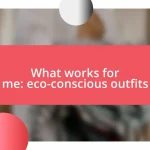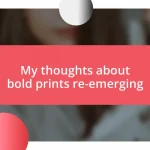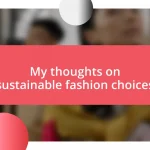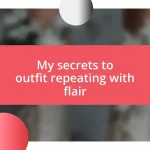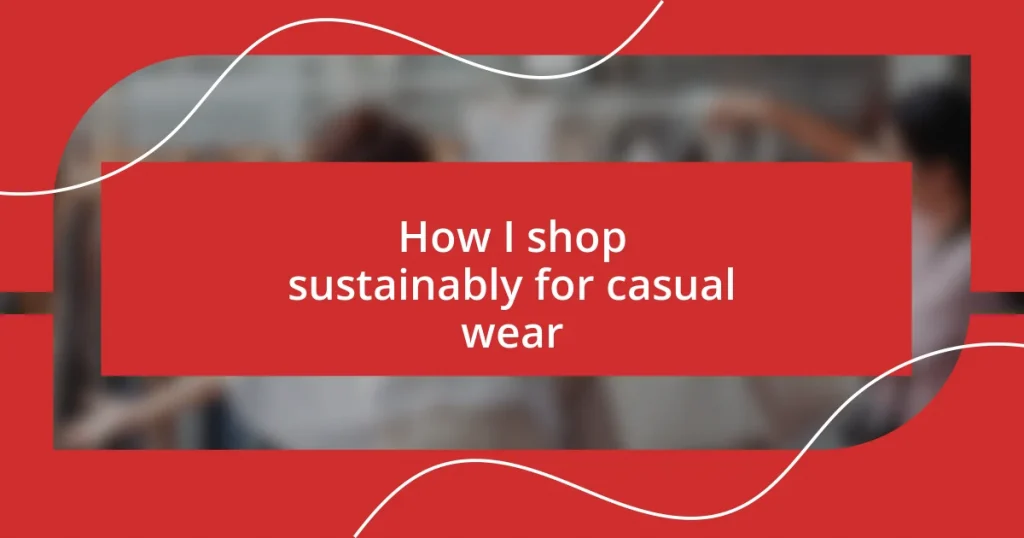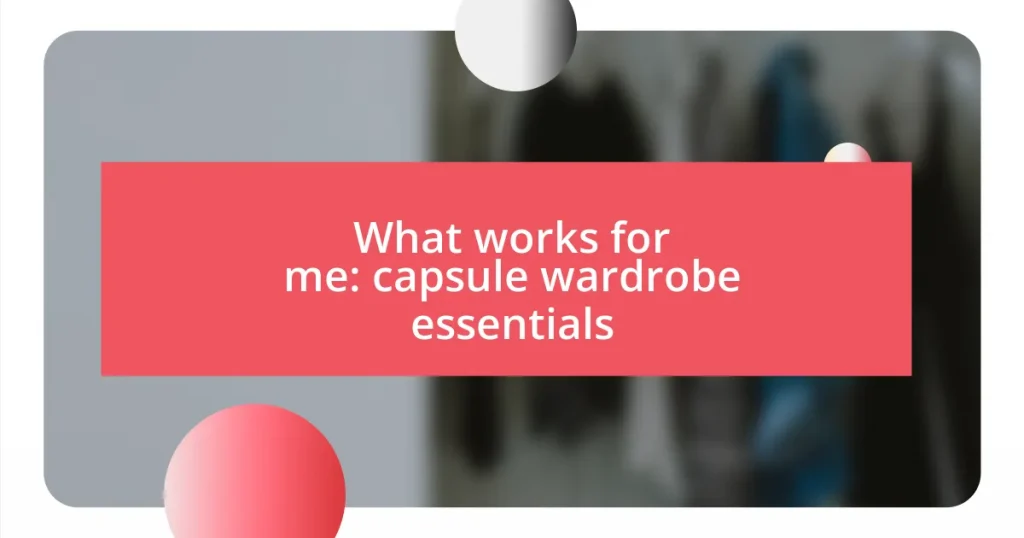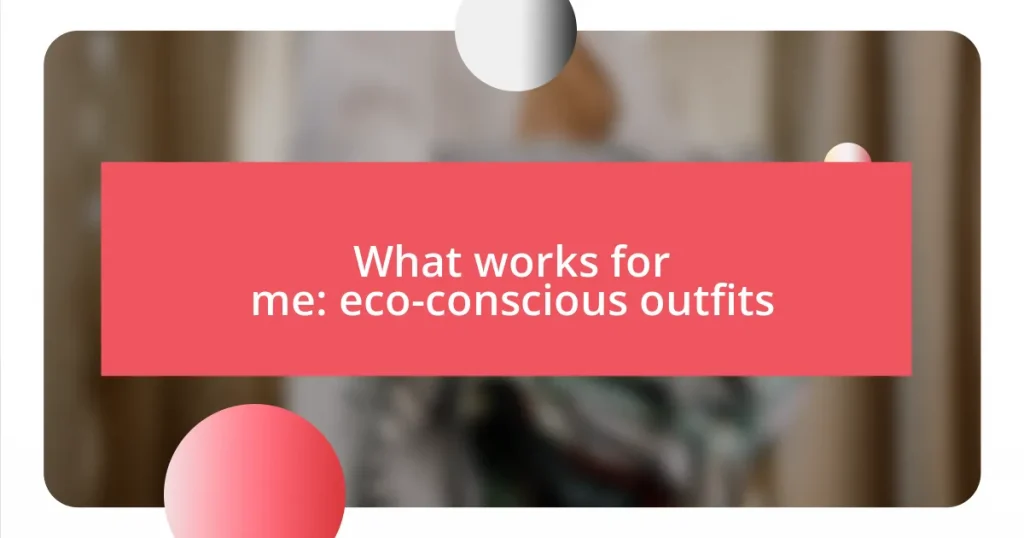Key takeaways:
- Sustainable fashion emphasizes choosing eco-friendly materials and brands, considering the story behind each piece and its production ethics.
- Shopping secondhand and exploring thrift options not only reduces waste but also offers unique items and memorable experiences.
- Creating a versatile wardrobe with timeless staples enhances creativity in styling while maintaining a lower ecological footprint.
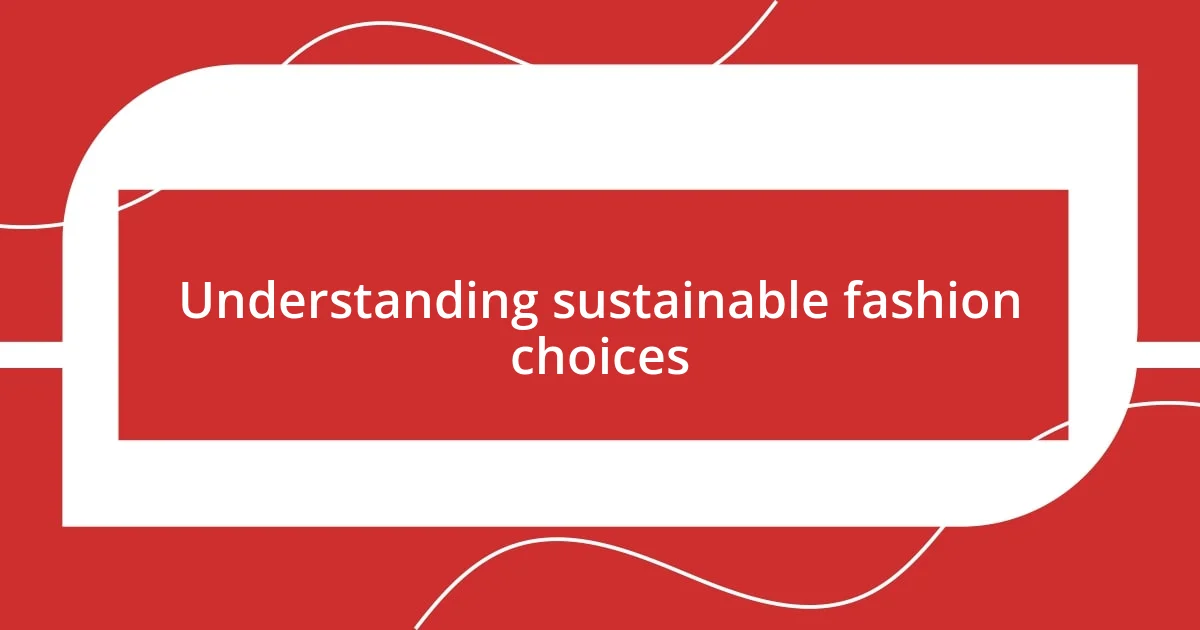
Understanding sustainable fashion choices
Sustainable fashion choices revolve around selecting materials and brands that prioritize environmental and ethical considerations. For instance, I remember browsing a local market and stumbling upon a stall showcasing organic cotton tees. The feel of the fabric against my skin, knowing it was grown without harmful pesticides, made me feel good about my purchase—for me, it was a small win for the planet.
When I think of sustainable fashion, I often ask myself, “What story does this piece tell?” Each item I choose reminds me of the journey behind it, from the worker who crafted it to the resources used in production. One unforgettable experience was finding a pair of jeans at a thrift shop. Not only did they fit perfectly, but they also felt like a piece of history, connecting me to someone else’s past while preventing waste.
The labels matter too—brands that promote transparency make my shopping experience more meaningful. I’ve found that checking for certifications like Fair Trade or GOTS (Global Organic Textile Standard) can assure me that I’m supporting ethical practices. It’s like a little badge of honor in my closet, making me feel proud every time I wear those thoughtfully chosen pieces.
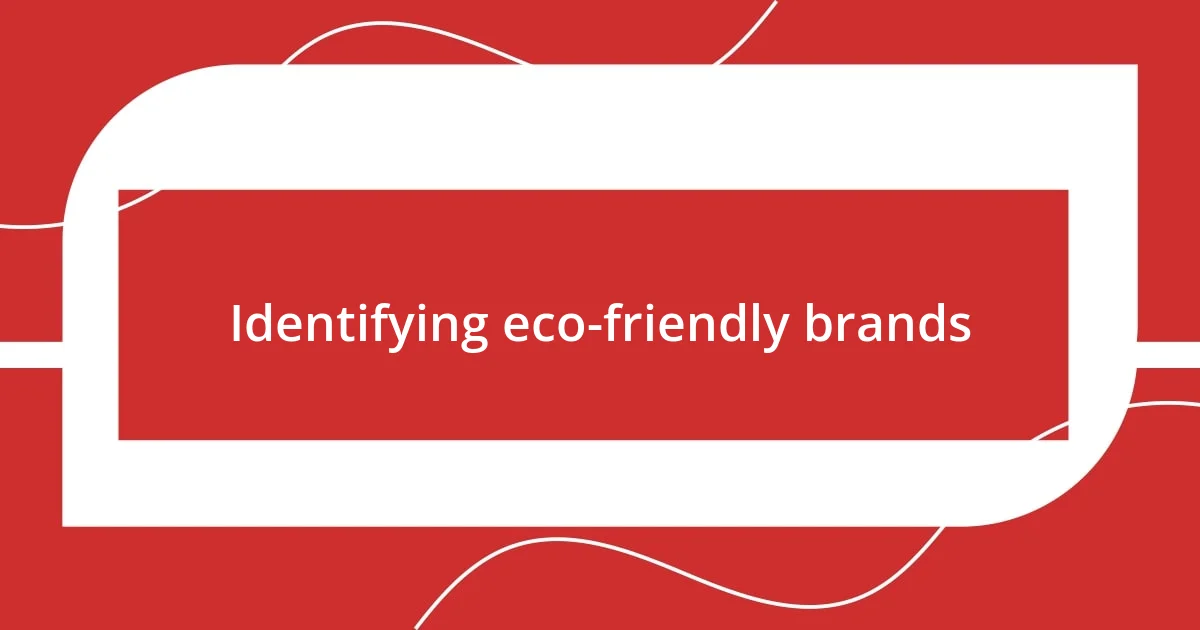
Identifying eco-friendly brands
Identifying eco-friendly brands can sometimes feel overwhelming, but I’ve found it rewarding to focus on certain key aspects. I often start by researching a brand’s mission statement and values. It’s encouraging to see companies that openly share their commitment to sustainability. I remember when I discovered a footwear brand that not only used recycled materials but also pledged to plant a tree for every pair sold. It made me feel like my choice was part of something bigger.
Additionally, customer reviews can provide a wealth of insights. When I was considering a new casual jacket, I came across a brand recognized for its eco-friendly practices. The glowing feedback from other shoppers about the jacket’s comfort and longevity helped solidify my decision. It resonated with me; knowing I wasn’t just buying a product, but supporting a brand that genuinely cared about the environment felt incredibly fulfilling.
It’s also important to look for specific labels and certifications that indicate a brand’s commitment to sustainability. I remember a time I got really excited about a shopping spree because I found a list of brands recognized for their eco-conscious efforts. Seeing certifications like Carbon Neutral or B Corp beside their names added an extra layer of confidence in my purchases. It felt great rooting for brands that were genuinely making an effort to tread lightly on our planet.
| Brand | Eco-friendly Practices |
|---|---|
| Patagonia | Uses recycled materials and promotes fair labor |
| Everlane | Transparency in pricing and ethical factories |
| People Tree | Fair Trade certified and organic materials |
| Allbirds | Carbon neutral and uses renewable materials |
| Reformation | Eco-friendly production and provides sustainability reports |
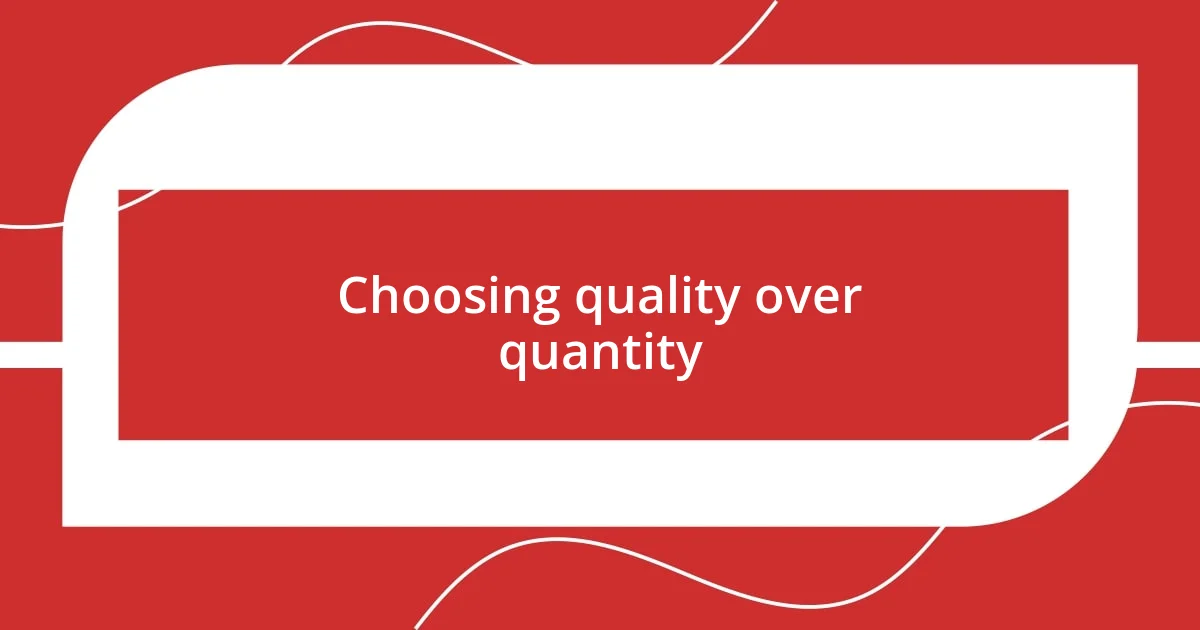
Choosing quality over quantity
Choosing quality over quantity has profoundly shaped how I shop for casual wear. When I invest in well-crafted pieces, it feels satisfying to know they’ll last longer than fleeting trends. I remember purchasing a classic leather jacket—though it was a splurge, the moment I slipped it on, I felt the craftsmanship and weight of its quality. This feeling reassured me that each time I wore it, I was making a sustainable choice.
Moreover, prioritizing quality has helped me build a curated wardrobe I truly cherish. Here are a few key factors I consider:
- Material Matters: I always check if the fabric is durable and sustainable, like organic cotton or hemp.
- Lasting Style: Timeless designs ensure I can wear pieces season after season without them feeling outdated.
- Ethical Production: Ensuring the brand values ethics and craftsmanship guarantees my purchase supports fair labor practices.
- Care Instructions: I look for clothes that require less upkeep, helping to extend their lifespan and reduce waste.
This approach means I buy less but appreciate more, turning my closet into a collection of essentials that tell a story—my story.
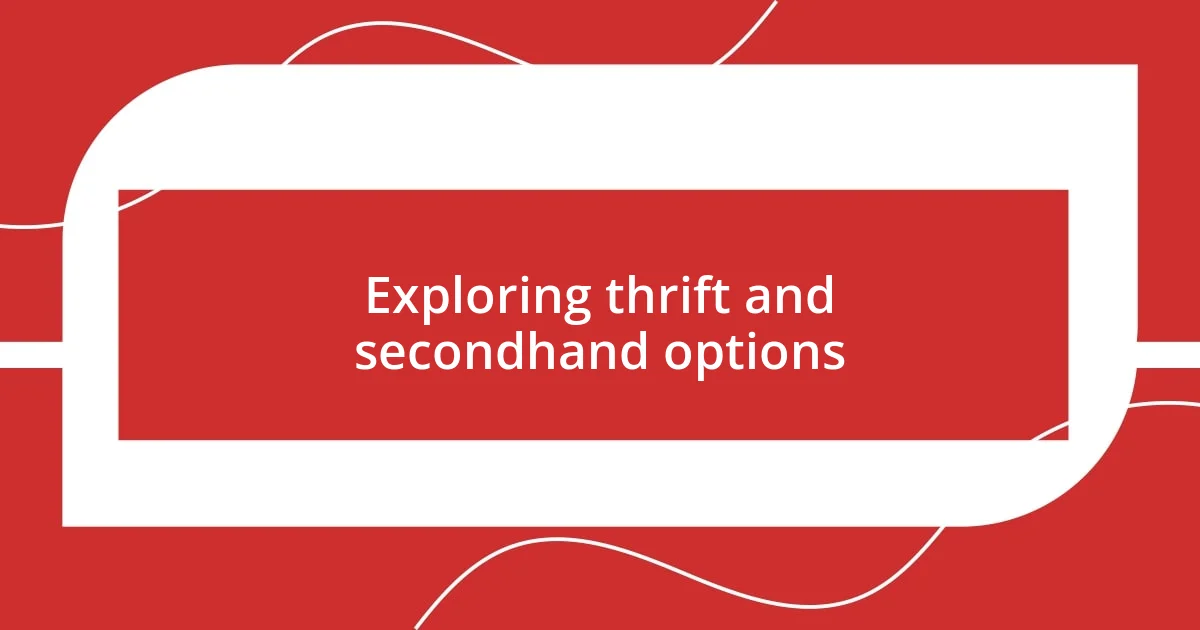
Exploring thrift and secondhand options
Exploring thrift and secondhand options has opened up a world of sustainable fashion for me. I vividly recall my first trip to a local thrift store. As I sifted through the racks, the thrill of finding a vintage denim jacket, complete with patches from a bygone era, made me feel like I’d unearthed a hidden gem. Each time I wear it, I’m not just showcasing a trendy piece; I’m sharing a story from the past, and that feels special.
I think about secondhand shopping as a treasure hunt. There’s a sense of adventure in discovering unique items that you won’t find anywhere else. One time, I found a pair of barely-worn sneakers that I had admired in a store just weeks before. The rush of snagging them at a fraction of the original price was exhilarating! It makes me question: why wouldn’t I opt for secondhand when the experience is so delightful and eco-friendly?
Another aspect I love is knowing that by choosing thrifted or vintage pieces, I’m actively reducing waste. I recall a time when I donated a box of clothes I no longer wore, and it struck me how empowering it felt to give those items a new life and purpose. Each piece in my wardrobe tells a story, and by shopping secondhand, I’m not just buying clothes—I’m making a conscious choice to support a more sustainable lifestyle.
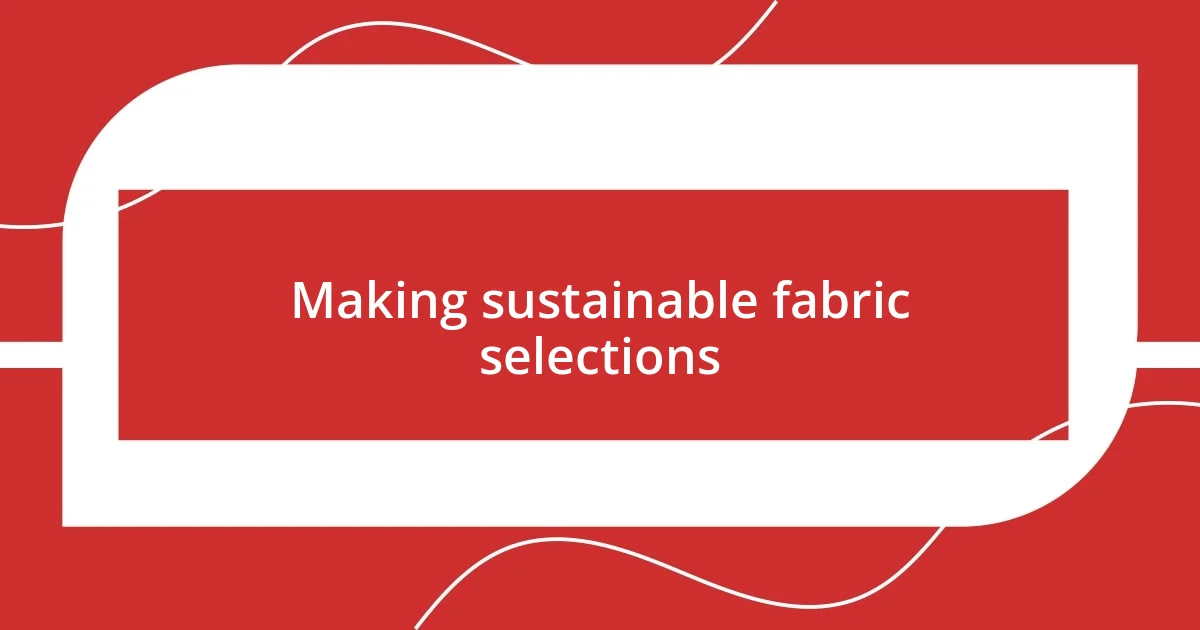
Making sustainable fabric selections
When it comes to fabric selections, I’ve learned to pay attention to the origins and processes behind what I wear. One day, while browsing a boutique, I stumbled upon a dress made from Tencel, a fabric derived from sustainably sourced wood pulp. I couldn’t help but think about how this eco-friendly material is not only soft and breathable but also biodegradable. That moment reinforced my belief that the right fabric choice contributes to a much larger conversation about sustainability.
I often reflect on the environmental impact of synthetic fabrics—like polyester, which is derived from petroleum and has a substantial carbon footprint. It’s disheartening to realize that while those trendy polyester blends might feel nice initially, they ultimately don’t have the same long-term value. Once, I purchased a cute top that ended up losing its shape after just a few washes. This experience made me more vigilant about checking fabric labels and opting for natural fibers like linen or bamboo, which not only look good but feel good on the planet too.
Ultimately, choosing sustainable fabrics is about making thoughtful decisions that resonate with my values. Every time I hold a garment in my hands, I ask myself: “Is this item really worth it?” When I find that perfect piece, made from responsibly sourced materials, I feel an uplifting sense of purpose. It’s like partaking in a little revolution with each successful purchase, contributing to a healthier planet while expressing my personal style.
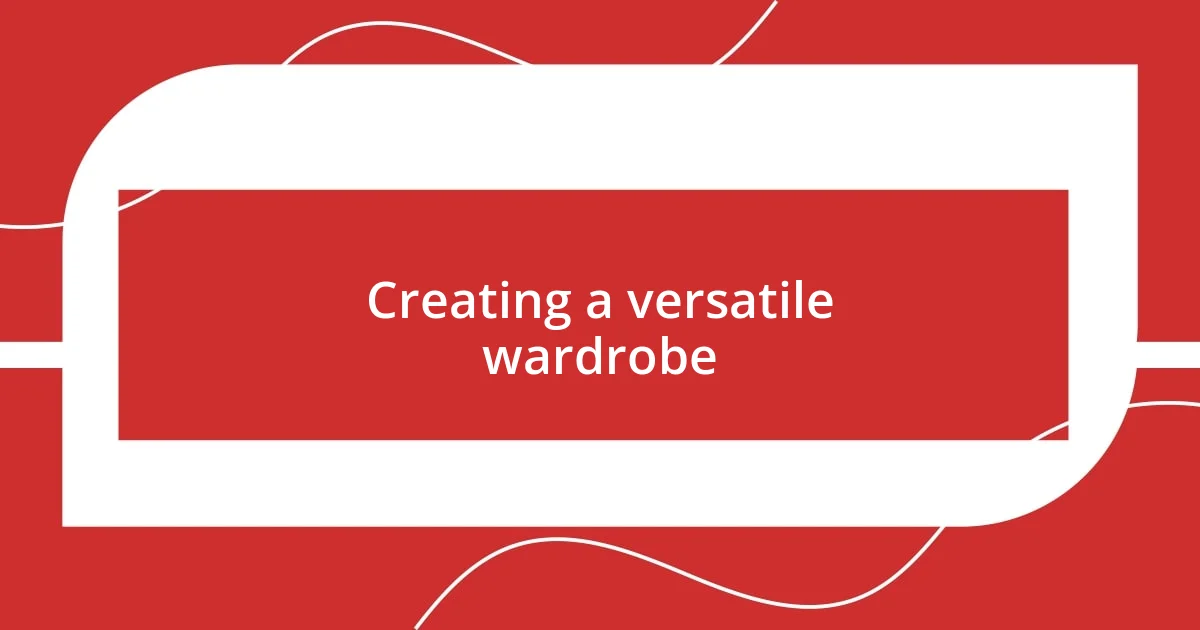
Creating a versatile wardrobe
Creating a versatile wardrobe is all about finding pieces that work well together and can be styled in multiple ways. I remember a time when I invested in a simple black dress; it quickly became my go-to for everything from casual brunches to evening outings. It’s amazing how swapping out accessories can completely change the outfit’s vibe. Isn’t it fascinating how one piece of clothing can adapt to different occasions?
I’ve learned the significance of picking staple items that’re not just trendy but also timeless. For instance, a classic pair of denim jeans can be dressed up with a blazer for work or kept casual with a cozy sweater on weekends. I often find myself reaching for those versatile pieces again and again, asking, “How can I style this differently today?” This approach makes my wardrobe feel expansive, even if it’s more minimal.
The cherry on top is choosing colors and patterns that complement each other. I once committed to a neutral palette that, surprisingly, opened up countless combinations. Each time I put together an outfit, I feel a little thrill of creativity, pulling pieces that enhance my personal style while keeping my ecological footprint low. Don’t you just love the idea of having a compact wardrobe that still feels endlessly fresh?


